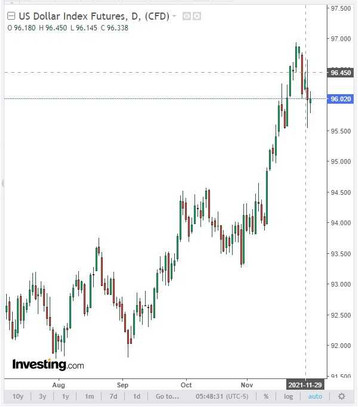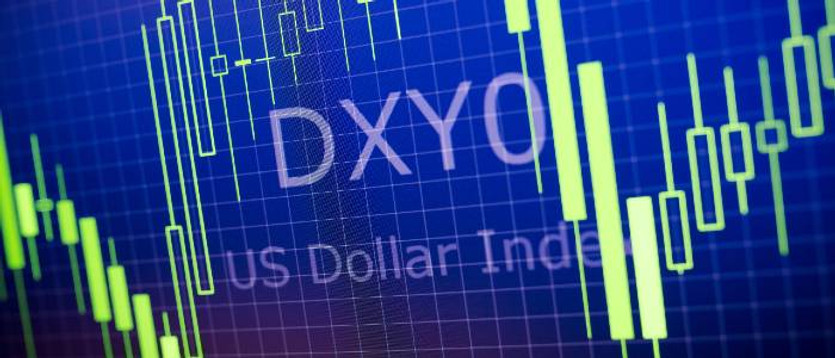During yesterday's American trading session, the financial markets experienced increased volatility. In particular, the dollar strengthened sharply shortly after the start of the speech by the head of the Fed, Jerome Powell. Powell said that inflation now probably should not be considered temporary, as its pace of growth has exceeded the Fed's target for a long time. "The risk of higher inflation has increased", Powell said at a Senate banking committee hearing on Tuesday, where Treasury Secretary Janet Yellen also spoke. In this regard, Powell considers it necessary to accelerate the curtailment of incentives. "The economy is in very good shape, inflationary pressures are high, so in my opinion, it is advisable to consider postponing (the timing) of winding down the purchase of assets, which we actually announced at the November meeting, a few months earlier", Powell said, adding that “we (at the Fed) are adapting our policies, and we will continue to adapt them".
As you know, following the meeting that ended on November 3, the Fed leaders decided to reduce the volume of purchases of assets, which amounted to $ 120 billion a month, by $ 15 billion in November and December. In their opinion, such a cut, "is likely to be appropriate every month", although they are willing to adjust the pace of the withdrawal of purchases, "if it is justified in view of changes in the outlook for the economy". If after the December meeting, which will be held on December 14-15, the Fed leaders accelerate the pace of reduction in asset purchases, for example, to $ 30 billion a month, then the QE program may be completed by March, which will increase the likelihood of an increase in interest rates in the first half of next year. And this prospect creates the preconditions for the further strengthening of the dollar.
However, towards the end of yesterday's American trading session, the dollar declined again, and the DXY dollar index moved into negative territory, closing yesterday's trading day near 96.00. Since the opening of today's trading day, the DXY dollar index has been mostly in a range, near the closing price of yesterday's trading day. As of this writing, DXY futures are traded near 95.95, and market participants are reevaluating yesterday's statements by Powell and the outlook for the dollar and the market in general, given the unexpected risks from the new more infectious Omicron coronavirus strain found in South Africa.
On Monday, US President Biden tried to reassure citizens of the country, saying that the White House administration, together with vaccine manufacturers, are developing plans to combat the new strain of coronavirus. He also said the omicron was "not a cause for panic".
However, if the governments of the leading economically developed countries begin to introduce lockdowns again, the degree of tension will rise again, and world stock indices will remain under pressure.
In this regard, the relevance of defensive assets, which can include the dollar, should grow. At the same time, the Fed, as follows from yesterday's statements by Powell, does not intend to abandon its plans to curtail stimulus, and it is even possible to accelerate this process. Obviously, market participants need new information and "food" for thought. In this regard, they will carefully study the monthly reports of the ADP and the US Department of Labor due this week and the ISM reports on business activity in the manufacturing and services sectors of the US economy.
Some of these reports will be published today. At 13:15 (GMT), the ADP report on the level of employment in the private sector will be published, which assumes an increase to 525,000 new workers in November (against an increase of 571,000 in October, 568,000 in September, 374,000 in August, 330,000 in July, 692,000 in June, 978,000 in May, 742,000 in April, 517,000 in March, 117,000 in February, 174,000 in January, a drop of -123,000 in December). Despite the relative decline in the indicator, this is strong data, indicating the continued recovery in the US labor market after falling in spring 2020.
And at 15:00 the index (PMI) of business activity (from ISM) in the manufacturing sector of the economy will be published, which is an important indicator of the state of the American economy as a whole. Forecast: 61.0 in November (versus 60.8 in October, 61.1 in September, 59.9 in August, 59.5 in July, 60.6 in June, 61.2 in May, 60.7 in April, 64.7 in March, 60.8 in February, 58.7 in January, 60.7 in December). The index is above the 50 level and has a relatively high value, which is likely to support the dollar. Data above 50 indicates an acceleration of activity, which has a positive effect on the quotes of the national currency.
Jerome Powell will also begin his speech to Congress at 15:00 (GMT). It is unlikely that he will add something new to what he was told on Tuesday. However, market participants will still follow the course of his speech in order to catch new signals regarding the prospects for the Fed's monetary policy, and therefore the dollar and the American stock market.
At 19:00 (GMT) the Fed's economic survey, known as the "Beige Book", will be published, which examines the current situation in the US economy. However, the impact on the market of the publication of this report is not strong.
Returning to the dynamics of the dollar and the DXY index, market participants who follow the dynamics of DXY futures can probably count on their further growth. Our buy stop would be just above recent local high of 96.45 with a restrictive stop loss below today's low of 95.77. The nearest take profit is at 97.00. The more distant DXY upside target is the 100.00 mark.






